EFL Category Three Academies
It’s estimated that it costs Category 1 academies in England around £3.5m every year to operate.
This is all in the hope of finding the next gem who can either become a first-team regular or go on to be sold for a substantial amount.
Only one in every 200 academy players becomes a professional footballer, highlighting the difficult task of producing a player of the required standard.
Away from the glitz and glamour of clubs with Premier League status, producing an elite player is even more difficult.
Most clubs in EFL League 1 and 2 are Category 3 academies, limited in recruiting players in the youth development phase (u12-u16) to those who live within an hour and a half’s drive from the training ground.
Category 1 academies have the ability to recruit players nationally from u14.
Yet this hasn’t limited the impact of category 2 and 3 academies.
35% of England’s squad for Euro 2024 came through at an academy that was ranked category 2 or lower.
This begs the question: who could be the next shining star to rise from an English Football League academy into the Premier League?
Four players who currently play in category three academies will be assessed through this tactical analysis, which will be presented as a scout report.
We’ll provide an analysis of their strengths and standout attributes to demonstrate their potential to break into the professional game.
Will Wright Scouting Report At Salford City
The remarkable rise of Salford City has been well-documented over the past 10 years.
Since their joint takeover between the members of the class of 92 (Gary and Phil Neville, Paul Scholes, Ryan Giggs and Nicky Butt) and Peter Lim in 2014, Salford have risen from Non-League to League 2.
The owners not only set out to build a club that could push to be in the upper levels of the EFL but to produce players through their own academy.
The members of the class of 92 are known for being products of the famous Manchester United academy.
Salford now look to build an academy that can help push the club to the next level.
One player hoping to make the grade at the Greater Manchester club is centre-forward Will Wright.
The 16-year-old has many of the characteristics to be a top-level centre-forward.
The first is his desire and ability to get into areas where he’s most likely to score.
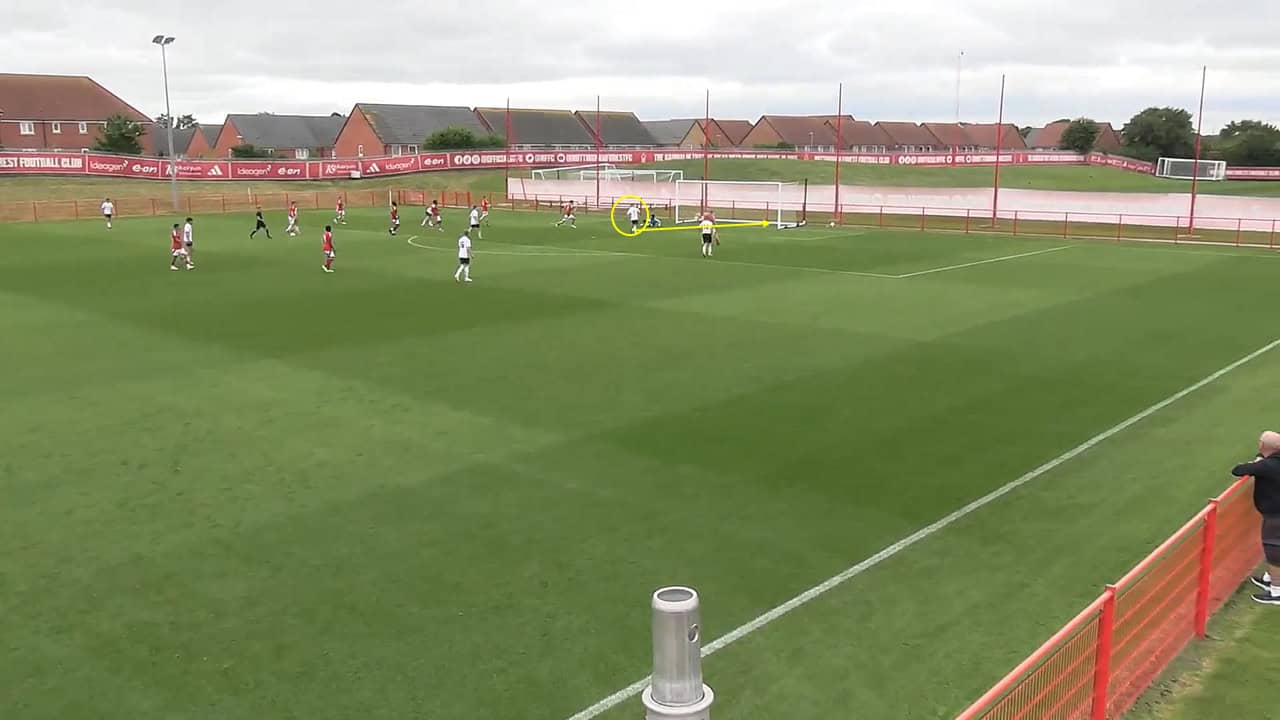
Here, Wright has made his way into the box as his teammate progresses with the ball on the left flank.
After his teammate’s shot is saved and parried back into the area, Wright reacts fastest, putting away the rebound.
Wright’s ability to seize goalscoring opportunities isn’t purely luck.
It comes from a desire to score goals and, just as important, from an intelligence that can create these opportunities.
Wright’s clever movement is displayed in this situation.
He first comes toward the ball, dragging the opposition’s centre-back with him.
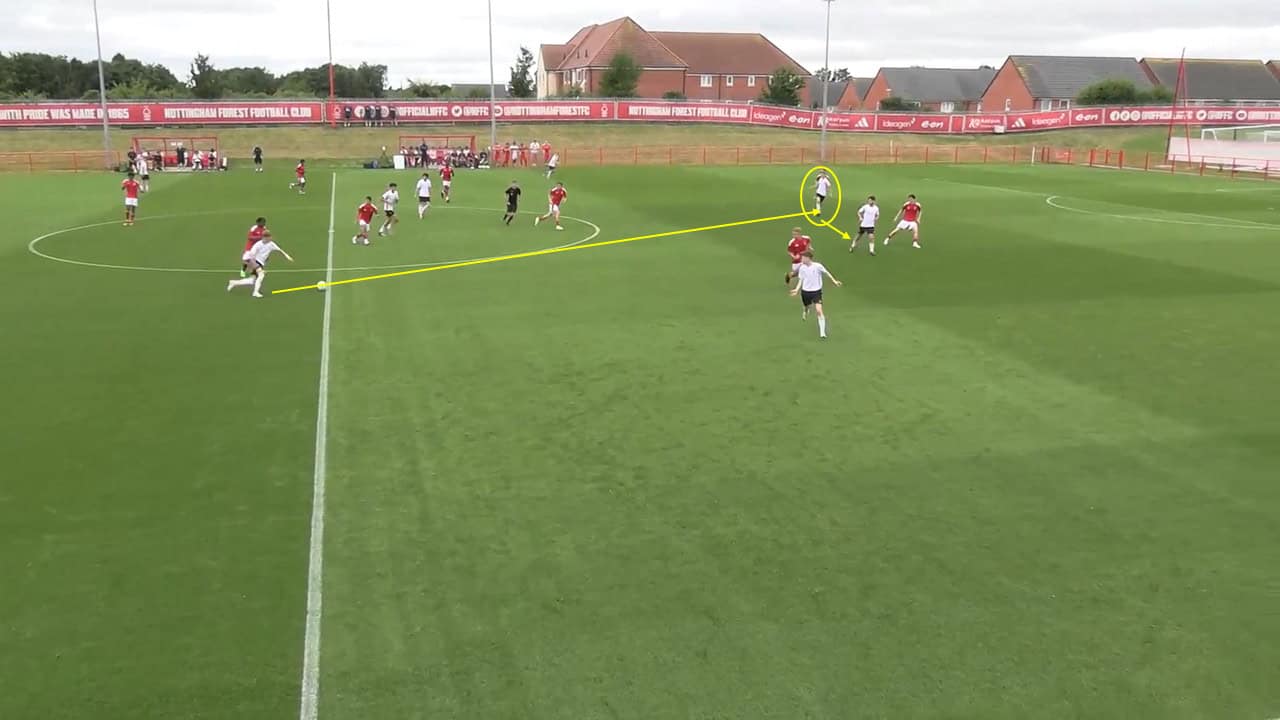
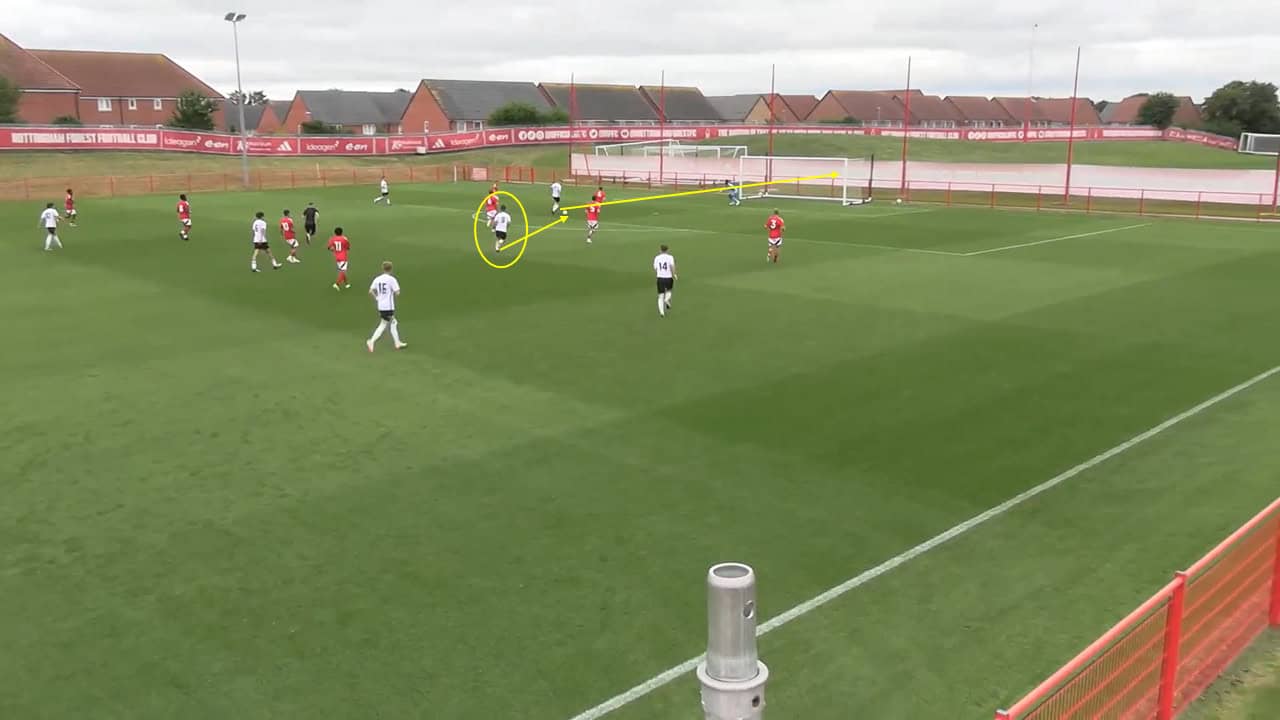
He quickly lays the ball off before he spins in behind the space he’s created with his initial movement.
He is then played through on goal, where he coolly tucks the ball away.
His movement, combined with his willingness to get into goalscoring positions constantly, is why he’s averaged 4.6 shots per 90 minutes, with 4.1 coming in the box.
Yet, Wright isn’t solely a poacher.
He has the ability to connect play as well.
All strikers need to be able to link up play and use the supporting runs of their teammates.
Wright is more than willing to compete for the ball physically.
Standing at 189 cm, Will Wright can often be found battling for the ball to win and maintain possession.
He’s won 55% of his ground duels.
His technical quality also contributes to Wright being effective when he attempts to link play.

Here, Wright receives the ball on the edge of the box.
After producing a slick stepover, he slides a teammate through on goal, who capitalises on the opportunity that Wright has produced for him, placing the ball into the far corner.
Wright’s creative powers are seen in him having 1.45 key passes per 90.
Zane Okoro Scouting Report At Lincoln City
There’s a feel-good factor around Lincoln City at the moment.
Under the Management of Former Leeds United U21 Head Coach and England Futsal manager Michael Skubala, the League 1 side agonisingly missed out on the playoffs last year.
Their good form has continued into this season.
Skubala has a background in youth development and will be hoping that he can bring talent from The Imps’ academy through to the first team.
Zane Okoro is one player who’s already been named in Lincoln’s first-team panel.
The 17-year-old is a member of the u18 side and has many qualities that make him one to watch.
Playing both as a number 10 and as a winger, Okoro has the vital attributes needed to thrive in these positions — awareness.
Okoro is always looking to get into pockets of space to get on the ball.
Once he’s in these areas, he constantly scans his surroundings to be aware of his next action.
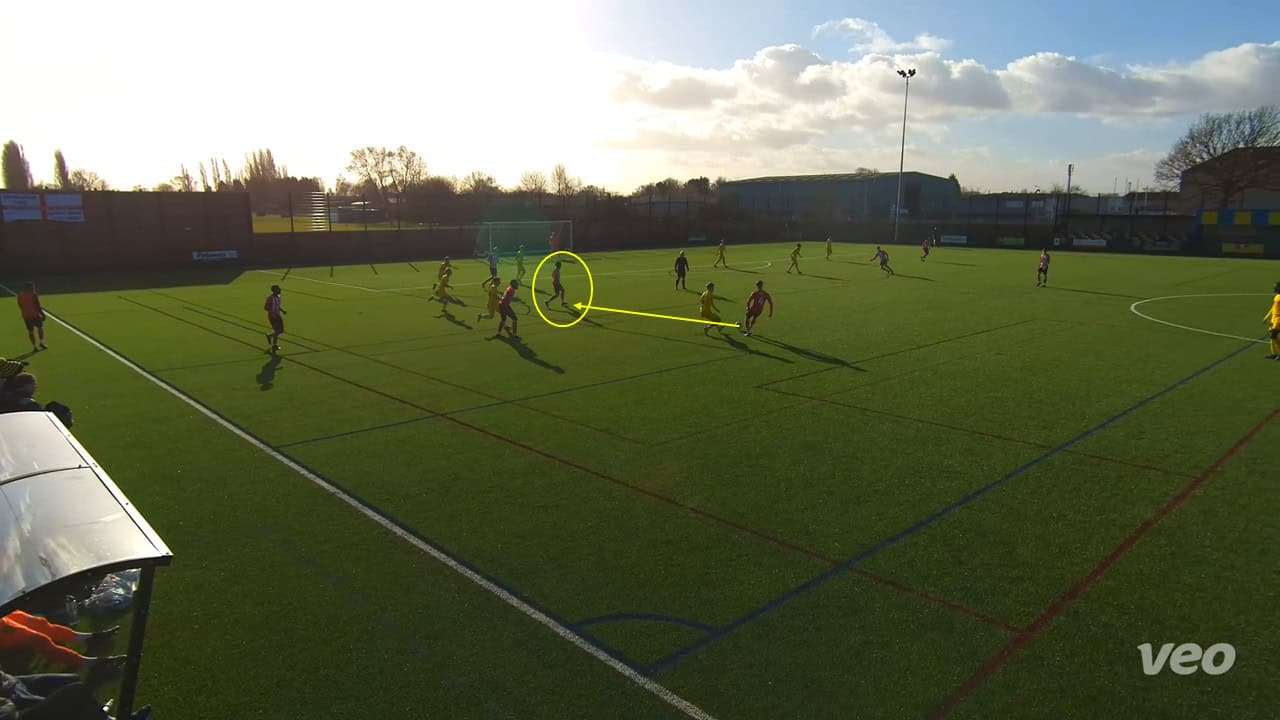
Here, Okoro starts on the left wing.
He moves inside as his side’s left back progresses down the flank.
Once the ball is passed inside to one of Lincoln’s midfielders, he continues to adjust his position to get on the ball.
Sensing he can receive a pass, he constantly scans.
He already knows his next move as the ball is played towards him.
He takes his first touch towards goal and shoots with his next, forcing a save from the goalkeeper.
Okoro also has the creativity that is needed to play as an attacking midfielder; Okoro averages 1.52 key passes per 90.
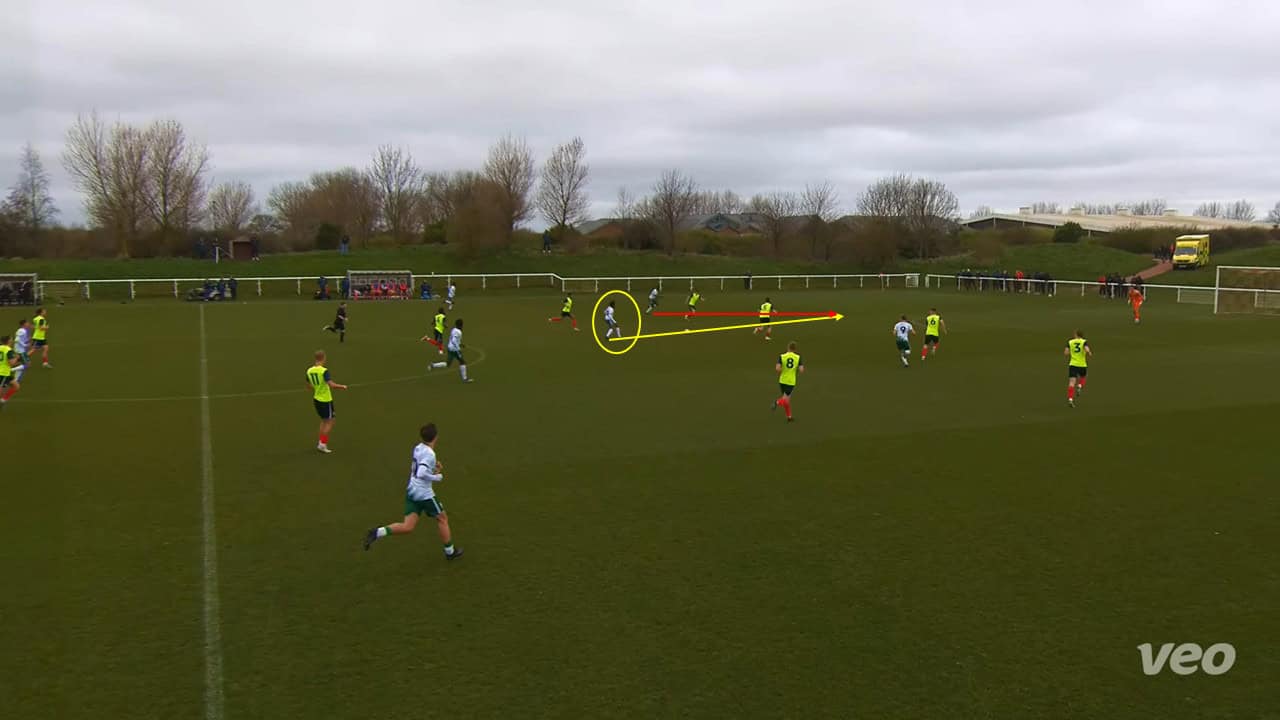
In this situation, Okoro once again picks up the ball in an excellent space.
He frequently scanned again to see his options for when he received the ball.
He drives at the heart of the opposition before he plays an inch-perfect pass between the opposition’s right-back and right centre-back, creating a clear opportunity for his teammate.
Okoro also has the ability to find the net himself; he has an impressive average of 0.49 goals per 90.
Averaging 2.6 shots per 90, many of his goals have come from his ability to create space for himself.
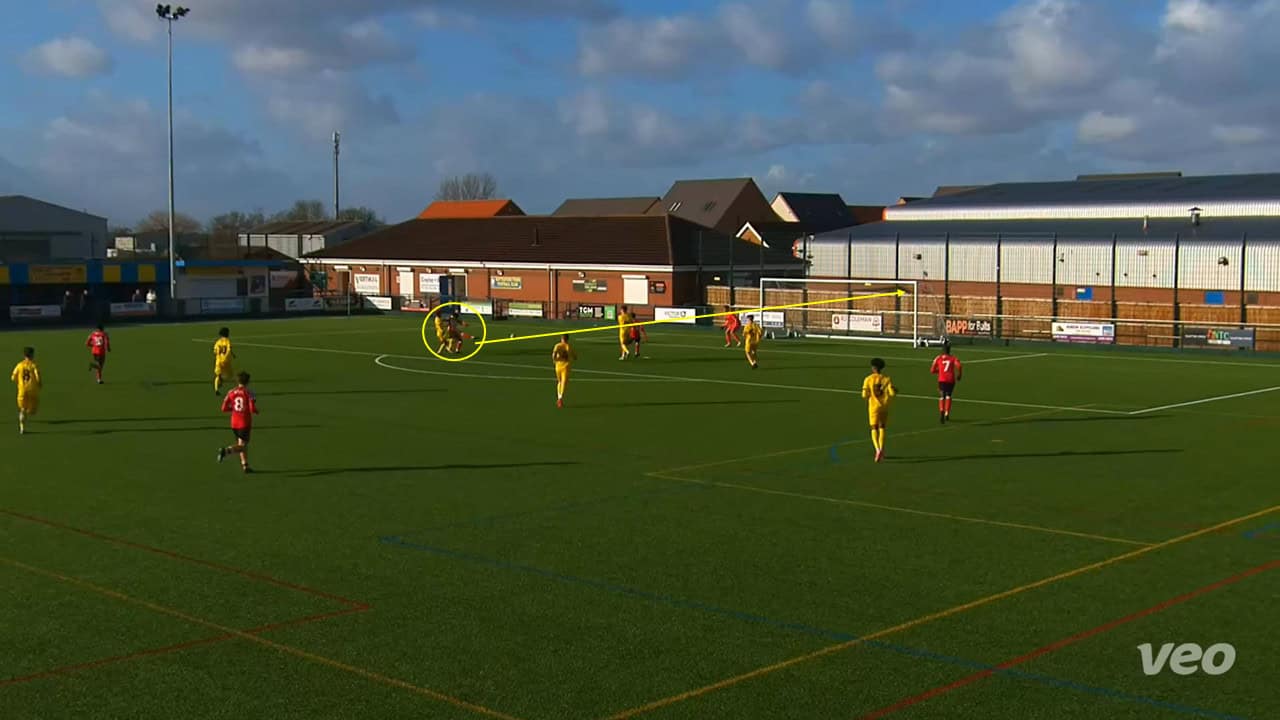
Here, Okoro pulls out wide.
He receives a long diagonal ball on the edge of the opposition’s box.
He performs a lovely skill, flicking the ball over the opponent’s dangling leg, which gives him the space to fire the ball into the top corner.
Kymani Leliendal Scouting Report At Blackpool
Blackpool are in one of England’s talent hotbeds.
The North West of England has produced a remarkable number of players, and a considerable number of clubs in England’s top four divisions are based in Lancashire.
This means there’s real competition for players amongst academies.
Yet one promising prospect whom Blackpool has managed to attract to their academy is 16-year-old Kymani Leliendal.
The first-year scholar plays as a right-back.
Many of Leliendal’s technical and physical qualities have made him a real asset for the Seasiders u18 side, both in attack and defence.
Leliendal has incredible physical attributes.
He has the endurance to get up and down the pitch to support his team both in attack and defence.
He also has great strength when competing for the ball and an incredible leap, allowing him to dominate in the air.
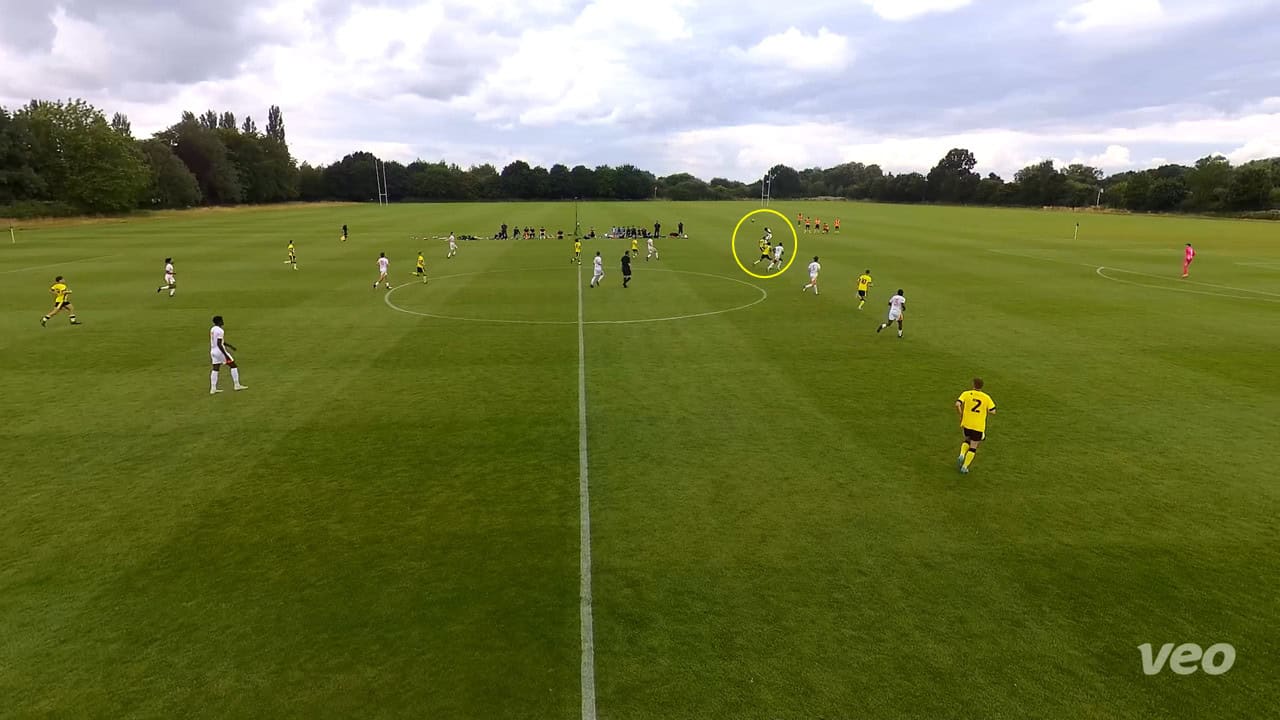
In this situation, the opposition attempts to play a long diagonal ball.
Leliendal competes with the winger to win the ball.
He leaps above his opponent and wins his aerial duel easily.
Leliendal has won 60% of his aerial duels.
Defensively, Leliendal combines his physical attributes with an excellent understanding of defending.
Like all great full-backs, he thrives in 1v1 situations.
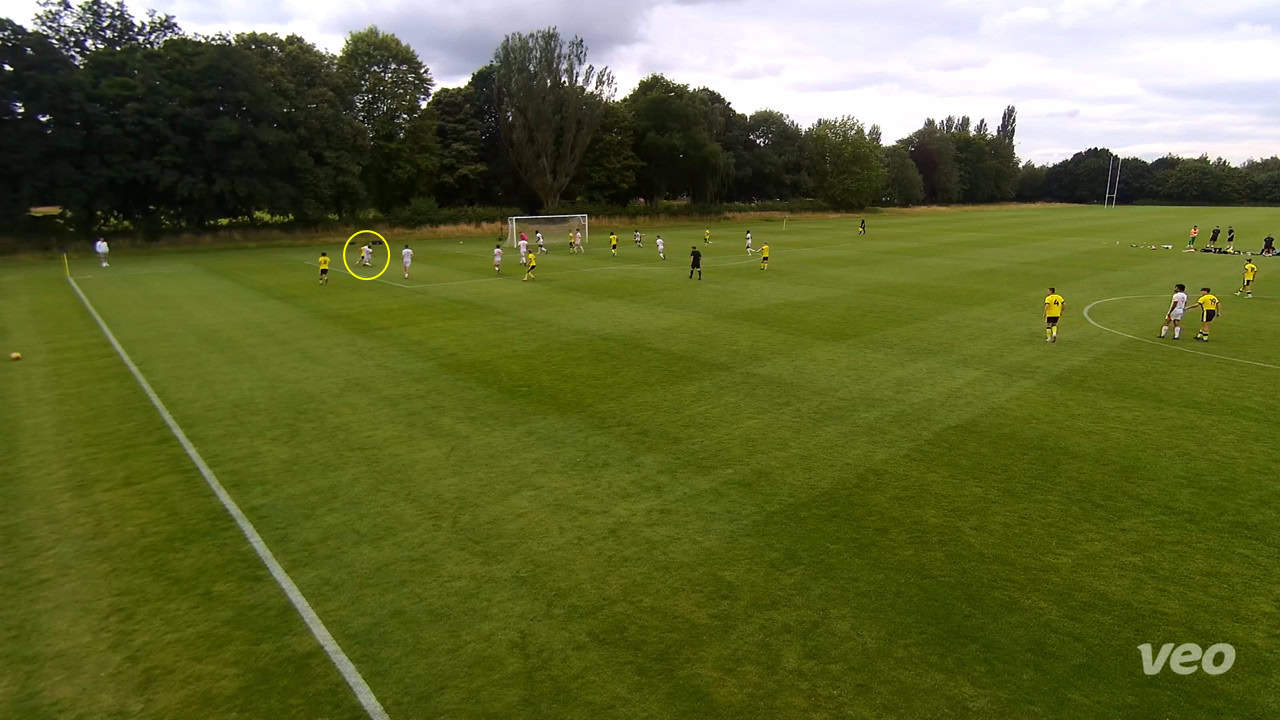
Here, Leliendal is 1v1 with an opposition winger on the edge of his own box.
He’s smart in delaying the attack, ensuring he doesn’t commit with the opposition’s full-back supporting and waiting for him to leave space behind.
Leliendal then steps in and makes a strong tackle.
This quality in 1v1 situations is demonstrated by him having a 58% success rate in his tackles.
Despite Leliendal’s evident quality off the ball, he shows real class in possession.
As is desirable in modern-day full-backs through the evolution of popular tactics, Leliendal has the ability to play inverted.
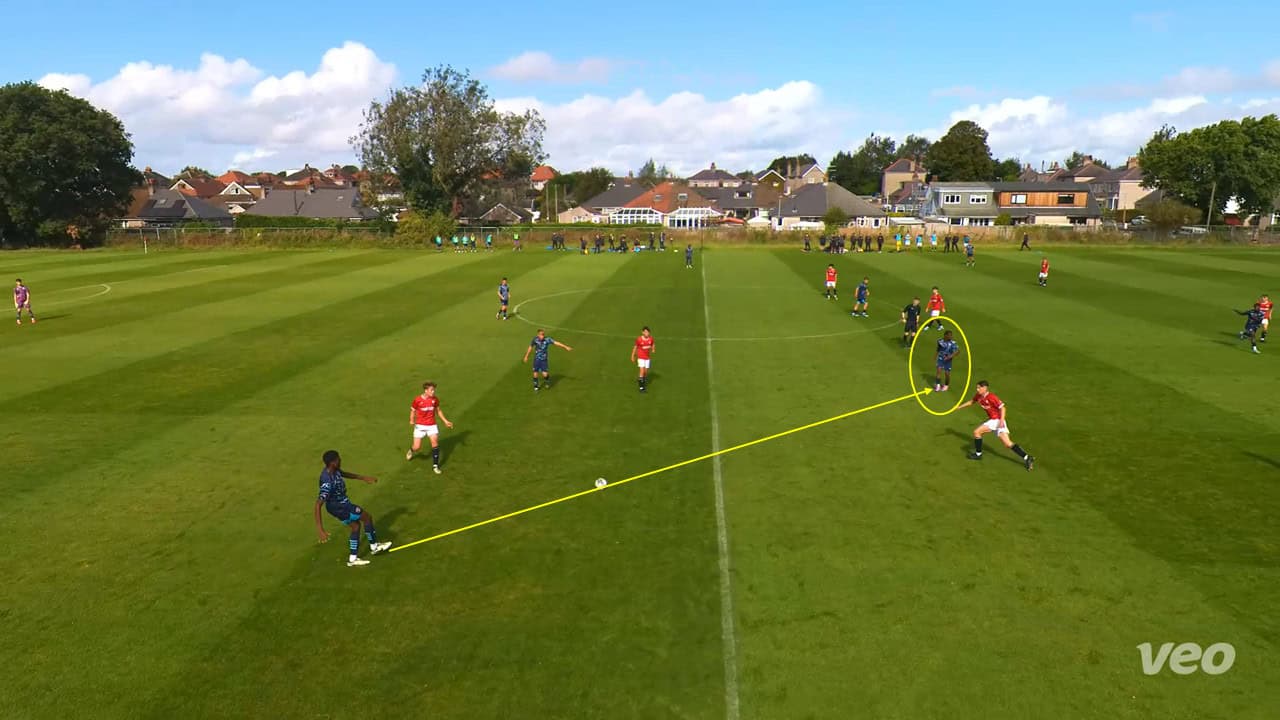
In this situation, Leliendal steps into midfield.
As the ball travels, he scans to check his surroundings.
He then takes the ball on his back foot and plays forward.
Leliendal’s quality in possession is highlighted by the fact he makes 24 forward passes per 90.
Richard Llara Scouting Report At Stockport County
Stockport County is a club that means business.
Having dropped as low as the 6th tier of English Football in the 2012-13 season, they began the long climb up to where they feel they belong, the English Football League.
In the 2021-22 season, Stockport gained promotion into the Football League and later won promotion to League One last season.
Between these promotion seasons, Stockport gained category 3 status for their academy in the 2022/23 season.
Stockport will be hoping to add some of their own players to their successful first-team squad.
In the coming years, Richard Llara may break into the Hatters’ first team.
The 15-year-old is currently a member of the County’s under-16 side.
Playing both as a centre-back and central midfielder, he has caught the eye for a variety of reasons.
Llara is incredibly comfortable on the ball.
Stockport encourage their youth teams to build up from the keeper and work the ball through the thirds.
Having a player as comfortable as Llara on the ball enables a side to play out from the back.
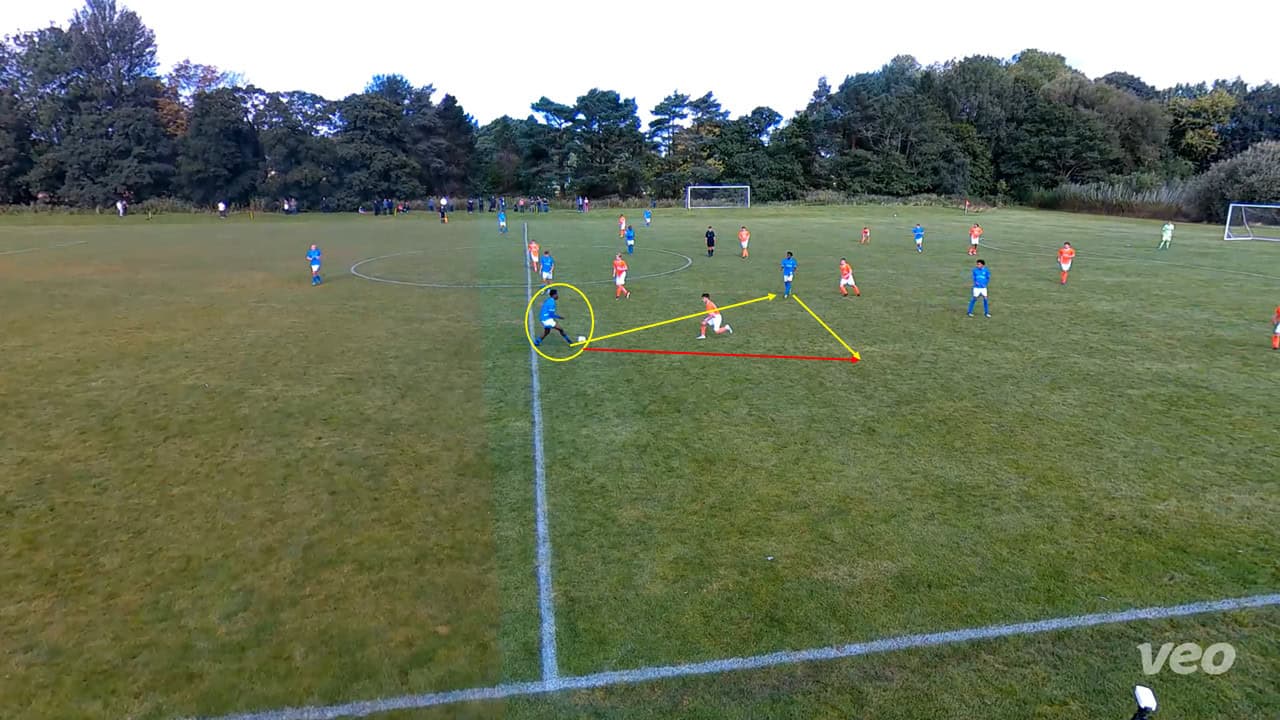
Here, we see Llara on the ball in his own half. Playing as a centre-back, he puts his foot on top of the ball.
This invites an opponent to press him.
Llara then plays a pass around the pressing forward and makes a supporting run after his pass.
Llara’s quality in possession is clearly seen statistically.
When playing as a centre-back, he averages 66 passes per 90 minutes, 32 of which are forward.
He also has a high pass accuracy of 82%, demonstrating his reliability in possession.
This is undoubtedly a reason why he thrives in midfield.
Lllara’s possession capabilities are seen when he plays in central midfield.
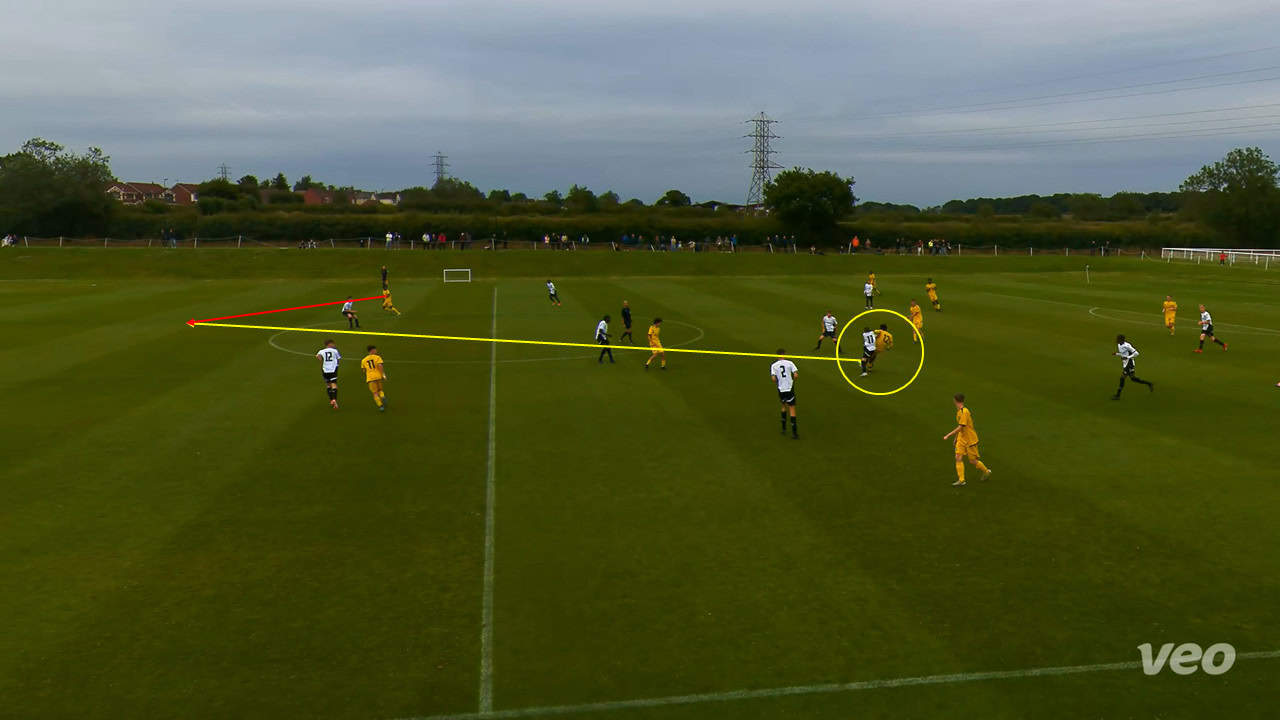
In this situation, Llara plays an incredible through ball, piercing the opposition’s backline.
The pass is weighted perfectly for one of Stockport’s forwards to get on the end.
The forward then coolly finishes the excellent chance that Llara had for him.
Llara averages 1.08 key passes per 90.
Llara’s technical ability is evidently one of his standout features.
Yet his defensive competitiveness is also a major factor in his versatility.
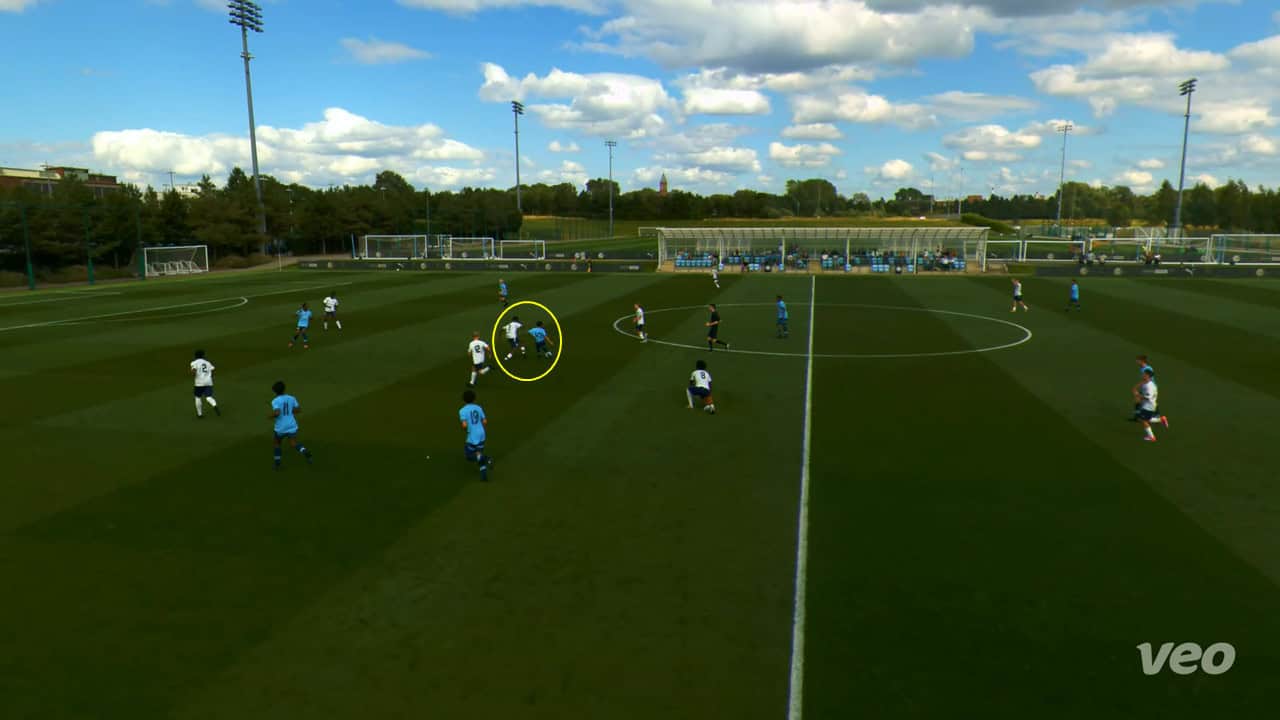
Here, Llara faces a centre forward running towards him.
Llara is smart and doesn’t dive in.
He waits for the forward to make his move.
At that point, Llara gets his body across his opponent and makes a strong challenge.
Llara is successful in 59% of his tackles.
Conclusion
Premier League academies will always be responsible for producing copious amounts of talent who go on to do incredible things in the game.
However, there is and always will be those players who develop away from England’s elite in Category 2 and 3 academies.
Before looking at the names lining up in Premier League 2 fixtures, consider the talent being produced by the EFL.
Where may the next John Stones or Ollie Watkins be found?





Comments